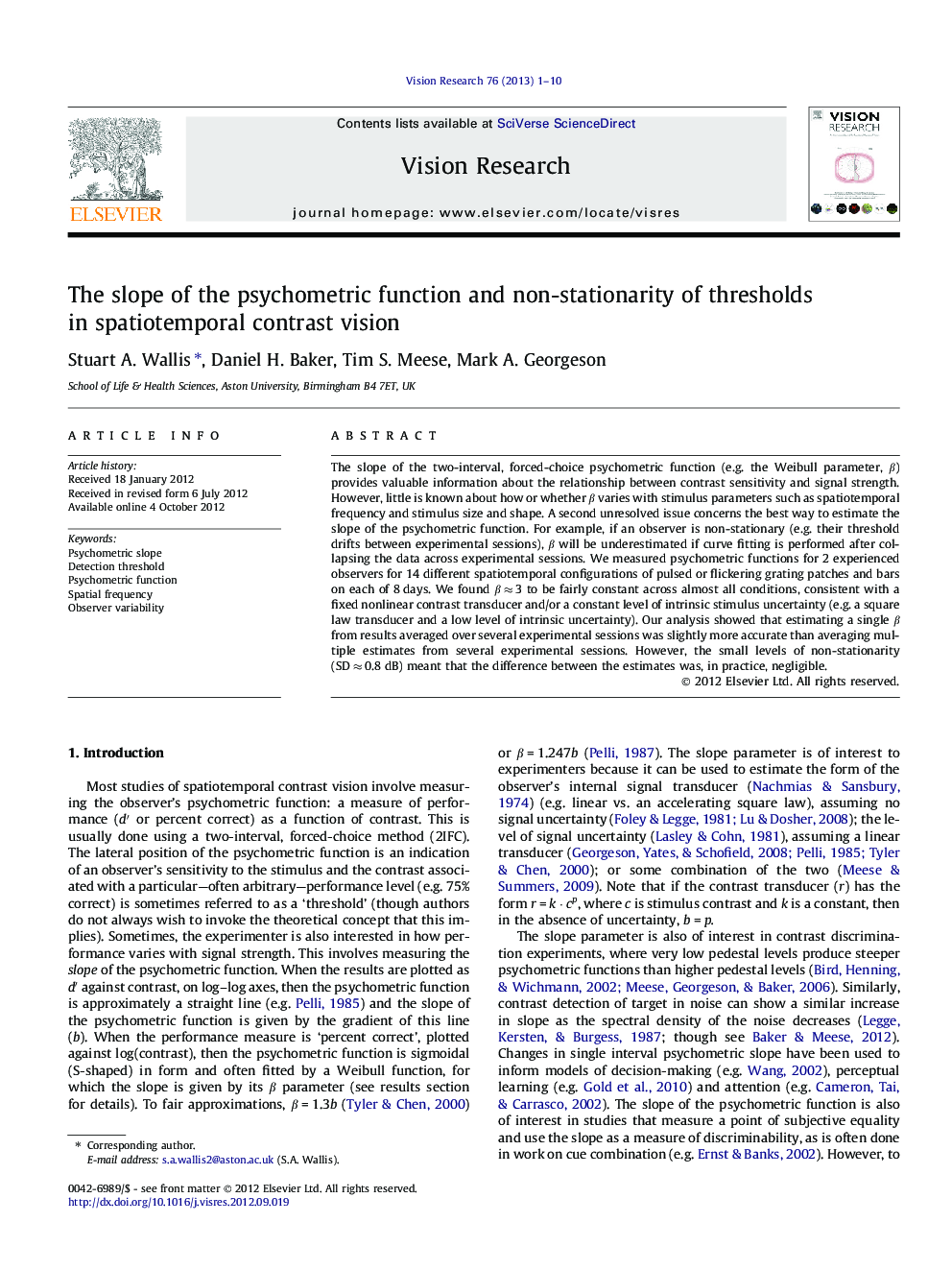| Article ID | Journal | Published Year | Pages | File Type |
|---|---|---|---|---|
| 6203624 | Vision Research | 2013 | 10 Pages |
The slope of the two-interval, forced-choice psychometric function (e.g. the Weibull parameter, β) provides valuable information about the relationship between contrast sensitivity and signal strength. However, little is known about how or whether β varies with stimulus parameters such as spatiotemporal frequency and stimulus size and shape. A second unresolved issue concerns the best way to estimate the slope of the psychometric function. For example, if an observer is non-stationary (e.g. their threshold drifts between experimental sessions), β will be underestimated if curve fitting is performed after collapsing the data across experimental sessions. We measured psychometric functions for 2 experienced observers for 14 different spatiotemporal configurations of pulsed or flickering grating patches and bars on each of 8 days. We found β â 3 to be fairly constant across almost all conditions, consistent with a fixed nonlinear contrast transducer and/or a constant level of intrinsic stimulus uncertainty (e.g. a square law transducer and a low level of intrinsic uncertainty). Our analysis showed that estimating a single β from results averaged over several experimental sessions was slightly more accurate than averaging multiple estimates from several experimental sessions. However, the small levels of non-stationarity (SD â 0.8 dB) meant that the difference between the estimates was, in practice, negligible.
⢠How do stimulus size, shape and spatiotemporal frequency affect psychometric function slope? ⢠Slope was fairly constant (Weibull β â 3) across almost all conditions. ⢠Consistent with a fixed nonlinear contrast transducer and/or constant intrinsic uncertainty. ⢠Analysis suggests that the method of pooling data across sessions is not critical for estimates of β.
